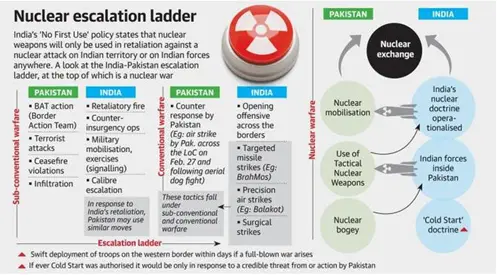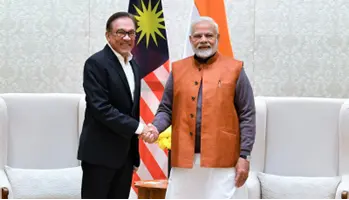Thursday, 22nd August 2024
Government Does Not Get About Public Administration
Why in the news?
- Since the 2024 elections, India’s government faces increased uncertainty and a more complex political environment.
- Officials are struggling to adapt, especially with the need for greater collaboration amid strong opposition.
- This shift is evident in controversies such as the policy reversal on lateral entry without reservation in the civil service.
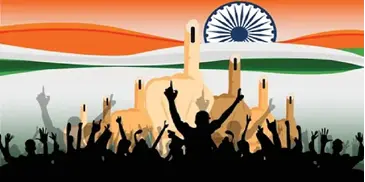
Lateral Entry and the Illusion of Reform:
- Misconception:
- The reliance on lateral entry to solve administrative issues reveals a misunderstanding.
- Despite the promise of "maximum governance, minimum government" in 2014, the bureaucracy has expanded, exposing a shortage of civil servants to meet India's needs.
- Fundamental Issues:
- The introduction of mid-level professionals from the private sector to address these shortcomings overlooks key differences between public administration and corporate governance.
Challenges of Integrating Corporate Practices into Public Administration:
- Objectives and Mission:
- Corporate Governance: Focuses on profit, shareholder value, and growth with clear, unchanging goals.
- Public Administration: Manages diverse sectors like health and education, requiring adaptability to varying government policies.
- Decision-Making Processes:
- Corporate: Typically, top-down, infrequent changes, aligned with company goals.
- Public: Decentralised, participatory, balancing diverse interests and legal constraints.
- Accountability and Transparency:
- Corporate: Confidential, strategic discretion with accountability to shareholders.
- Public: High transparency and accountability to the public, ensuring actions withstand scrutiny.
- Leadership and Management:
- Corporate: Visionary leadership with stable objectives and financial outcomes.
- Public: Stewardship, managing fluctuating interests, and maintaining social harmony.
- Resource Allocation:
- Corporate: Driven by profit maximisation, focusing on high returns.
- Public: Welfare-driven, considering equity, social justice, and national development.
- Impact of Political Dynamics:
- Corporate: Relatively stable, influenced by market forces.
- Public: Highly affected by political shifts, requiring adaptability to changing directives and volatile conditions.
Systemic Issues in the Indian Civil Service:
- Historical Model: S. K. Das highlights that the Indian civil service retains a rigid, hierarchical model from the British era, leading to persistent inefficiencies.
- Regulatory Environment: The regulatory framework has become overly complex and restrictive, stifling innovation and progress within the civil service.
- Systemic Constraints: Systemic issues, rather than individual shortcomings, hinder civil servants from achieving impactful results despite their comparable skills to those in the private sector.
- Successful High-Level Lateral Entries:
- Nandan Nilekani: Effectively developed Aadhaar due to high-level authority and flexibility.
- S. Ramadorai: Successfully created a skill development framework with a similar high-level role.
- Challenges with Lower-Level Lateral Entries: Lower-level corporate professionals struggle to make significant changes due to the restrictive bureaucratic structure, a challenge also faced by highly qualified civil servants.
The Path Forward:
- Political Ownership:
- Achieving systemic change requires strong political leadership at both national and state levels, with the Prime Minister and Chief Ministers playing key roles.
- State Acceptance:
- Similar to GST implementation, large-scale administrative reforms need state cooperation. The NITI Aayog could be pivotal in driving these changes.
- Learning from Global Models:
- Adopting best practices from countries like Australia and New Zealand, with support from the Department of Administrative Reforms and Public Grievances (DAR&PG) .
- The Commonwealth Secretariat could aid in reforming India’s administrative system.
Conclusion:
Transforming India’s entrenched civil service will require time, effort, and a holistic approach to reform. By addressing systemic issues and adapting successful global practices, India can enhance its governance model to better serve its people in the 21st century.
Source: IE
Comprehensive Strategic Partnership between India
Why in the news?
- India and Malaysia have upgraded their bilateral relationship to a Comprehensive Strategic Partnership during the Malaysian Prime Minister's visit to India.
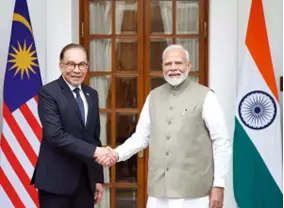
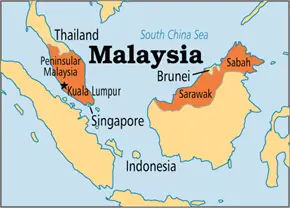
Key Outcomes of the Malaysian Prime Minister's Visit:
- Comprehensive Strategic Partnership:
- The partnership, previously an Enhanced Strategic Partnership since 2015, has been upgraded to a Comprehensive Strategic Partnership.
- Economic and Trade Enhancements:
- Bilateral trade hit a record USD 19.5 billion, highlighting strong economic ties.
- Further investment is encouraged in sectors like fintech, energy, digital technologies, and start-ups.
- ASEAN-India Trade in Goods Agreement (AITIGA):
- Both nations agreed to fast-track the review of AITIGA to enhance its effectiveness, aiming for completion by 2025 and improving supply chain links with ASEAN.
- MoUs and Agreements:
- Workers: Streamlined processes for recruitment, employment, and repatriation of workers.
- Ayurveda: Cooperation in traditional medicine, with India to establish an Ayurveda Chair at Universiti Tunku Abdul Rahman in Malaysia.
- Digital Technologies: Collaboration on cybersecurity, AI, quantum computing, and integration of India’s UPI with Malaysia’s PayNet.
- Culture & Heritage: Promoting cultural exchange and preserving heritage.
- Tourism: Boosting tourism and facilitating easier travel; Malaysia designated 2026 as Visit Malaysia Year.
- Public Administration & Governance: Sharing best practices in governance and reforms.
- Youth & Sports: Enhancing youth engagement and sports cooperation.
- Defence and Security Collaboration:
- Increased defence cooperation through joint exercises and capacity-building.
- Expanded defence industry and R&D collaboration.
- Joint commitment to counterterrorism and transnational crime.
- Educational Cooperation:
- Allocation of 100 seats under India’s ITEC Programme for Malaysian students in cybersecurity, AI, and machine learning.
- Multilateral Cooperation:
- Support for ASEAN centrality and Malaysia’s 2025 ASEAN Chairmanship.
- Collaboration on India’s bid for a permanent UNSC seat and Malaysia’s BRICS membership request.
- Sustainable Development and Climate Action:
- Joint efforts on sustainable energy and climate change, with Malaysia joining the International Big Cat Alliance.
- Acknowledgment of India’s International Solar Alliance and Coalition for Disaster Resilient Infrastructure.
Significance of the Visit for India’s Strategic Interests:
- Alignment with Act East Policy:
- The visit supports India's Act East Policy, aiming to strengthen ties with Southeast Asian nations.
- Engaging with Malaysia enhances India’s influence and connectivity in the ASEAN region.
- Addressing Past Frictions:
- Historical tensions arose from Malaysia’s criticism of India's Jammu and Kashmir policies and the Citizenship Amendment Act (CAA).
- Malaysia's accusations at the UN in 2019 led to India's reduced palm oil imports.
- This strained trade relationship was recently mended, with India resuming palm oil purchases after a four-month hiatus.
- Indo-Pacific Oceans Initiative (IPOI):
- The IPOI, launched by India in 2019, remains underutilised.
- Malaysia’s involvement could bolster its strategic role in the Indo-Pacific, addressing key areas such as maritime security and trade connectivity.
- South China Sea Concerns:
- Discussions on the South China Sea during the visit offer insights into Malaysia’s stance on China’s growing influence, aiding India in navigating regional security dynamics and developing its strategies in the Indo-Pacific.
- Boosting Trade Relations:
- Malaysia, India’s third-largest ASEAN trading partner and a significant investor, aims to secure and expand investments.
- With over USD 1.17 billion invested and around 70 Malaysian companies in India, the visit seeks to enhance bilateral trade and economic cooperation.
Key Highlights of India-Malaysia Relations:
- Historical Ties:
- India and Malaysia have shared historical ties dating back over a millennium, influenced by the Chola Empire.
- Chola rulers established trade routes linking South India with the Malay Peninsula.
- Economic and Commercial Relations:
- Malaysia is India's 13th largest trading partner, and India is among Malaysia’s top ten trading partners.
- Trade includes exports of mineral fuels and imports of palm oil.
- The Comprehensive Economic Cooperation Agreement (CECA) since 2011 and trade settlement in Indian Rupees since 2022 underscore the economic ties.
- Defence Cooperation:
- The 1993 MoU on Defense Cooperation facilitates joint ventures and procurement.
- Recent updates include the amendment of the MoU and the inauguration of Hindustan Aeronautics Limited’s regional office in Kuala Lumpur.
- Joint military exercises like Harimau Shakti and Samudra Lakshmana enhances strategic bonds.
- Regional Collaboration:
- Regular interactions between the Indian Navy and the Royal Malaysian Navy promote maritime cooperation.
- Indian Community:
- Malaysia hosts approximately 2.95 million Indians, forming the second-largest PIO community globally.
- Community issues include illegal immigration and exploitation, but the community enjoys religious freedom and cultural presence.
- Cultural Cooperation:
- The Netaji Subhash Chandra Bose Indian Cultural Center in Kuala Lumpur offers classes in Indian arts and languages.
- Cultural ties are also reflected in local adaptations of the Ramayana and the presence of temples like the Sri Veera Hanuman Temple.
|
UPSC Civil Services Examination, Previous Year Questions (PYQs) Mains Q:1 Evaluate the economic and strategic dimensions of India’s Look East Policy in the context of the post-Cold War international scenario. (2016) |
Increased Mobility Among Rural Girls on Education
Why in the news?
- Researchers from IIT Delhi and the Narsee Monjee Institute of Management Studies, in their paper in the Journal of Transport Geography, have described the rise in cycling among rural girls—from 4.5% to 11% over 10 years—as a "silent revolution."
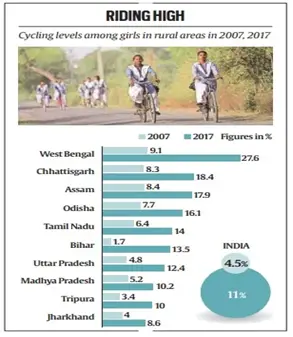
How has Increased Cycling Among Rural Girls Affected Education?
- Growth Overview:
- The percentage of rural girls cycling to school more than doubled from 4.5% in 2007 to 11% in 2017.
- Nationally, cycling levels among children increased from 6.6% to 11.2%.
- In rural areas, cycling levels rose from 6.3% to 12.3%, while urban areas saw a modest increase from 7.8% to 8.3%.
- Factors Contributing to the Rise in Cycling:
- Bicycle Distribution Schemes (BDS):
- Implemented in 20 out of 35 states and Union Territories (considering the undivided State of Andhra Pradesh), BDS played a crucial role in boosting cycling, especially among girls.
- These schemes provided bicycles to school-going children aged 14-17 to enhance school enrollment, particularly for girls, who faced higher dropout rates.
- Impact:
- West Bengal's BDS led to an increase in girls' cycling levels from 15.4% to 27.6%, making it the top state for rural girls' cycling.
- Bihar experienced an eightfold increase.
- Bicycle Distribution Schemes (BDS):
Implications on Broader Social Changes:
- Education:
- BDS have effectively improved school enrollment and retention rates among girls by making it easier for them to commute to school, thus reducing dropout rates and promoting continued education.
- Enhanced access to education leads to better long-term outcomes for girls, including improved job prospects and economic independence.
- Breaking Gender Norms:
- The rise in cycling among rural girls represents a significant step toward challenging patriarchal norms that have traditionally restricted women's mobility.
- This growth reflects a broader shift toward greater gender equality in rural areas.
What are the Other Schemes to Boost School Enrollment Among Girls in India?
- Mid-Day Meal Scheme: Provides nutritious meals to children in government schools, encouraging attendance and reducing dropout rates.
- Beti Bachao, Beti Padhao Scheme: Aims to promote the survival, protection, and education of the girl child.
- Sukanya Samriddhi Yojana: A government-backed savings scheme targeted at the parents of girl children, encouraging financial security for their future education and marriage.
- Kasturba Gandhi Balika Vidyalaya Scheme:
- Launched in 2004 to set up residential schools at the upper primary level for girls from disadvantaged communities in educationally backward blocks.
- Provides 75% reservation for Scheduled Tribes, Scheduled Castes, Other Backward Classes, or minority girls, with the remaining 25% reserved for girls from Below Poverty Line (BPL) families.
- Offers a recurring grant of Rs.1.5 lakhs per annum and a one-time grant of Rs.5 lakhs to establish schools.
- National Scheme of Incentives to Girls for Secondary Education:
- Aims to promote secondary education for girls above Class X, addressing high dropout rates at puberty.
- Under this scheme, a fixed deposit of Rs. 3000 is made in the name of the girl-child, with the requirement that she passes the Class X exams and reaches the age of 18 to withdraw the matured amount from the fixed deposit.
|
UPSC Civil Services Examination Previous Year Question (PYQ) Mains Q.1“Empowering women is the key to control population growth”. Discuss. (2019) Q.2 Discuss the positive and negative effects of globalisation on women in India? (2015) |
Train Accidents in India
Why in the news?
- Recently, Sabarmati Express derailed near Kanpur, Uttar Pradesh after its engine struck an object on the tracks and India saw an average of 44 consequential train accidents per year over the 5 years ending FY23.

Railway Safety and Accident Management:
- Accident Statistics:
- On average, there was one collision every 3.6 months in the past 64 months.
- The central region reported the highest share of accidents in 2022-23, accounting for 17% of total incidents.
- The number of accidents has significantly decreased by almost 90% from 470 in 2000-01 to 48 in 2022-23.
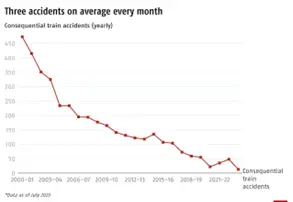
- Causes of Railway Accidents:
- Poor Track Maintenance: Issues like those leading to the 2022 Bikaner-Guwahati Express derailment in West Bengal highlight the impact of inadequate track upkeep.
- Negligence and Improper Spacing: The 2020 collision between a goods train and a passenger train in Andhra Pradesh was caused by spacing and negligence issues.
- Inadequate Safety Measures: Accidents at level crossings, such as the 2016 Punjab train-bus collision, demonstrate insufficient safety measures and warning systems.
- Signal Failures: System malfunctions and human errors, as seen in the 2017 Kuneru derailment and a 2021 Telangana collision, contribute to major accidents.
- Overcrowding and Over-speeding: The 2015 Mumbai stampede at Elphinstone station, driven by train-related panic, underscored issues related to overcrowding and excessive speed.
- Infrastructure Defects and Human Errors: Poor maintenance, overloaded routes, staff fatigue, and corruption further exacerbate accident risks.
- Government Initiatives:
- Kavach System: An advanced automatic train protection system utilising RFID, GPS, and electronic devices to enhance safety.
- GPS-based Fog Safety Device (FSD): Provides real-time signal and landmark information to ensure safe navigation in foggy conditions.
- Complete Track Circuiting: Implements electrical verification for track occupancy to prevent accidents.
- LHB Coaches: Modern coaches designed for higher speed, safety, and comfort, featuring anti-climbing couplers and fire detection systems.
- Modern Track Structure: Incorporates stronger infrastructure, including Prestressed Concrete Sleepers and high UTS rails for improved stability.
- Online Track Monitoring System: A web-based system for tracking and optimising asset maintenance decisions.
- Vigilance Control Devices: Monitors loco pilots’ alertness to prevent accidents due to human error.
- Rastriya Rail Sanraksha Kosh: Established in 2017-18 to fund track renewals, signalling upgrades, and rolling stock investments to reduce accidents.
- Fire Notices and Retro-reflective Sigma Boards: Enhances safety awareness among passengers and improves signal visibility in low-light conditions.
- Electrical/Electronic Interlocking: Automated control systems for train movements using advanced electrical circuits and relays.
- Way Forward:
- Establishment of Confidential Incident Reporting System: Implement a system allowing anonymous reporting of safety deviations to improve transparency and accountability.
- Inspection and Patrolling: Conduct regular inspections and patrolling of tracks and bridges to monitor for defects and ensure safety.
- Transformation of Management Mindset: Shift from fault-finding to fostering a culture of shared safety commitment and incorporating staff feedback.
- Rethink the Indian Railways Management Service (IRMS) Scheme: Evaluate and revise the scheme to enhance specialisation, efficiency, and loyalty among railway management personnel.
- Modernise Infrastructure: Upgrade tracks, bridges, and monitoring systems while ensuring a balance between investment in modern coaches and safety.
- Enforce Strict Regulations: Ensure rigorous adherence to safety protocols, impose strict penalties for non-compliance, and establish an independent body to oversee safety standards.
- Elimination of Level Crossings: Replace level crossings with Road Overbridges (ROBs) or Road Underbridges (RUBs) to reduce accident risks.
- Adopt Global Practices: Implement systems from international models like the UK’s Train Protection and Warning System (TPWS) and European Train Control System (ETCS) for enhanced automatic train control and communication.
- Introduce ATC and CATIS: Utilise Japan’s Automatic Train Control for speed regulation and Comprehensive Automatic Train Inspection System (CATIS) for detecting defects through sensors and cameras.
- Implement Earthquake Early Warning Systems: Develop and integrate Earthquake Early Warning Systems (EEWS) to provide alerts during seismic events and enhance rail safety.
|
UPSC Civil Services Examination, Previous Year Question (PYQ) Prelims: Q:1 Consider the following communication technologies: (2022)
Which of the above are considered Short-Range devices/technologies?
Ans: (d)
Mains: Q:1 The setting up of a Rail Tariff Authority to regulate fares will subject the cash strapped Indian Railways to demand subsidy for the obligation to operate nonprofitable routes and services. Taking into account the experience in the power sector, discuss if the proposed reform is expected to benefit the consumers, the Indian Railways or the private container operators. (2014) |
E-commerce Sector in India
Why in the news?
- Recently, The Union Minister of Commerce and Industry has raised concerns about the rapid expansion of the e-commerce sector in India, particularly targeting global giants like Amazon.
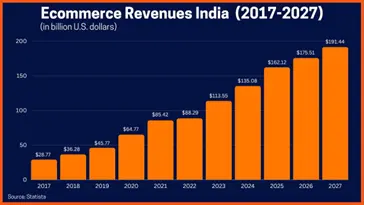
What is E-commerce?
- Definition: E-commerce, or electronic commerce, involves buying and selling goods and services, or transmitting funds and data, over electronic networks, predominantly the internet.
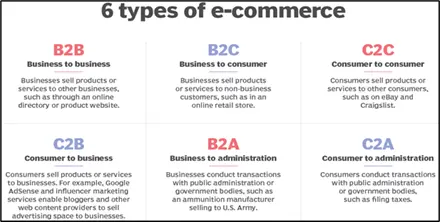
- Advantages:
- No Geographical Barriers: E-commerce enables product delivery to remote areas, bridging gaps between suppliers and customers, and fostering competition.
- Cost Reduction: Reduced overhead costs and economies of scale lead to lower product prices.
- Personalization: Enhances customer experience through feedback systems and personalised product recommendations.
- Business Expansion: Facilitates a broader customer base, higher sales, extended reach, and the convenience of recurring payments and instant transactions.
- Disadvantages:
- Security and Privacy Concerns: Inadequate encryption and protection mechanisms can compromise personal and financial data.
- Limited Customer Service: Resolving issues and assessing product suitability is often more challenging compared to physical stores.
- Regulatory Uncertainty: Ambiguous online sales laws can lead to mistrust between consumers and sellers.
- Product Evaluation: Lack of physical inspection means customers rely solely on digital images for product assessment.
- Accountability Issues: The quality of products may vary, with less accountability from e-commerce companies.
Key Factors Promoting the Growth of E-Commerce in India:
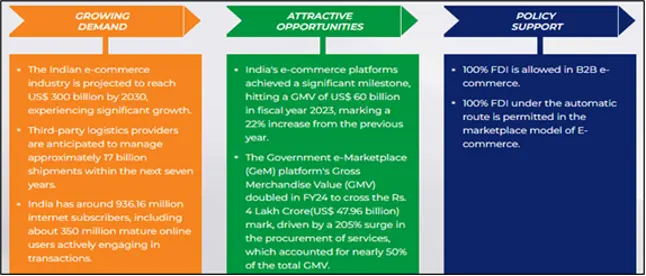
- Price Competitiveness: Many online products are priced lower than their offline counterparts, attracting price-sensitive consumers.
- Payment Options: The Digital India initiative and the rise of digital wallets and Unified Payments Interface (UPI) have broadened payment methods, although Cash on Delivery (COD) remains prevalent due to high cash circulation.
- Domestic Consumption: High domestic demand and consumption drive e-commerce growth, driven by a burgeoning middle class and increasing disposable income.
- Language Accessibility: English-dominant e-commerce platforms cater to India’s large English-speaking middle class, facilitating industry growth.
Government Initiatives to Promote E-commerce in India:
- Digital India and Related Programs: Initiatives like Make in India, Start-up India, Skill India, and Innovation Fund have been instrumental in supporting the e-commerce sector.
- Government e-Marketplace (GeM): Launched in 2016 to create an inclusive, transparent platform for public procurement, aiming to streamline and democratise procurement processes.
- National Retail Policy: Proposes an integrated approach for managing both offline and e-commerce, focusing on ease of doing business, licence rationalisation, digitization, and the establishment of an open network for digital commerce (ONDC).
- ONDC: Designed to promote open networks for digital commerce, using open specifications and protocols independent of specific platforms.
- Consumer Protection (e-commerce) Rules 2020: Requires e-commerce platforms to disclose product origin and listing criteria to ensure transparency.
- 5G Infrastructure Investment: Government investment in a fibre network for 5G aims to enhance e-commerce capabilities through improved connectivity.
Concerns Regarding E-Commerce Sector in India:
- Rapid Expansion: E-commerce is growing at an annual rate of 27%, with projections to double every three years.
- Employment Impact: The sector has generated 15.8 million jobs, including 3.5 million for women, and involves 1.76 million retail enterprises.
- Predatory Pricing: Concerns about predatory pricing practices, particularly by Amazon, which may undercut competition and threaten small retailers.
- Social Impact: The expansion of e-commerce could potentially disrupt the livelihoods of up to 100 million small retailers across India.
Source: BS
Telecommunications Act and OTT
Why in the news?
- The recently enacted Telecommunication Act has ignited a debate concerning the definition of "telecommunication services." A key point of contention between telecom operators and social media companies is whether over-the-top (OTT) platforms like WhatsApp and Google Meet.
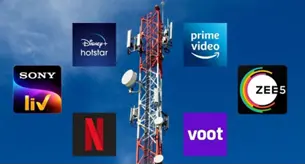
About the Telecommunications Act, 2023:
- Objective:
- To modernise and unify laws for the development, expansion, and operation of telecommunication services and networks.
- To address spectrum assignment and related matters.
- Replacement of Previous Laws:
- The Act replaces the Indian Telegraph Act, 1885, and the Indian Wireless Telegraph Act, 1933, reflecting advancements in telecom technology.
- Digital Implementation:
- The Act promotes digital frameworks, including online dispute resolution.
- Guiding Principles:
- Inclusion (Samavesh)
- Security (Suraksha)
- Growth (Vriddhi)
- Responsiveness (Tvarit)
- Key Features:
- Clear Definitions: The Act provides clear definitions, reducing uncertainties and boosting investor confidence, thus facilitating ease of doing business.
- Right of Way (RoW) Framework:
- This applies to both public and private properties, including government agencies, local bodies, and PPP projects like airports, seaports, and highways. Public entities are required to grant RoW permission promptly unless there are substantive grounds for refusal.
- Telecommunication Infrastructure: Telecommunication infrastructure is treated as separate from the property it is on, reducing disputes during property transactions.
- Common Ducts and Cable Corridors: The Central Government will establish these in alignment with the PM Gati Shakti vision.
- Standards and Conformity Assessments: The Act sets standards for telecommunication services, networks, and security to ensure national security and promote Indian technology.
- Universal Service Obligation Fund: The fund has been expanded to support services in underserved areas and to fund R&D in telecom services and technologies.
- Definition in the Act:
- The Act defines telecom services as the "transmission, emission or reception of any messages, by wire, radio, optical or other electromagnetic systems."
- Messages are broadly defined to include "any sign, signal, writing, text, image, sound, video, data stream, intelligence, or information."
- Telecom Operators' Interpretation:
- Telecom operators argue that OTT platforms fall under the definition of telecom services and should require licensing similar to traditional telecom services.
- The Cellular Operators Association of India (COAI) contends that OTT communication services should be included under Access Services authorization to ensure a level playing field.
- Government's Initial Clarification:
- The government, through former telecom minister Ashwini Vaishnaw, had earlier clarified that OTT platforms do not fall under the definition of telecom services.
- However, this statement was made to the media and is not legally binding.
- Current Dispute:
- Despite the earlier government clarification, telecom companies continue to argue that OTT platforms should be regulated under the Telecom Act.
- TRAI is currently holding consultations on service authorizations, with telecom companies and tech companies presenting opposing views.
- Opposition from Tech Companies:
- Tech companies, represented by the Broadband India Forum (BIF), argue that requiring OTT platforms to obtain telecom licences would stifle competition, innovation, and consumer choice.
- They believe that this could create an unfair market advantage for certain entities.
- Potential Implications:
- The resolution of this dispute could significantly impact market dynamics, regulatory frameworks, and the competitive landscape in India's digital communication sector.
About Telecom Regulatory Authority of India (TRAI):
- Establishment:
- Established under the Telecom Regulatory Authority of India Act, 1997.
- Mission:
- To promote growth in the telecommunications sector, positioning India as a key player in the global information society.
- Objectives:
- Regulation of Telecom Services: TRAI oversees the regulation of telecom services, including the fixation and revision of tariffs, responsibilities previously held by the Central Government.
- Fair Competition: TRAI aims to ensure a transparent policy environment that fosters fair competition and a level playing field among service providers.
- Regulations and Directives: TRAI issues regulations, orders, and directives to address various issues within the telecom sector.
Source: IE
Discovery of first time Liquid Water on Mars
Why in the news?
- A recent study has revealed vast amounts of liquid water hidden deep within Mars' rocky outer crust, representing a significant breakthrough in our understanding of the Red Planet.
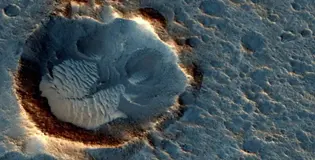
The Discovery of Liquid Water on Mars:
- About:
- First Discovery: This is the first time scientists have found evidence of liquid water on the Martian surface, beyond the known presence of water ice at the planet's poles.
- Study Details: The study, titled "Liquid Water in the Martian Mid-Crust," was published in the prestigious journal, Proceedings of the National Academy of Sciences (PNAS).
- Research Team: The study was conducted by scientists from the University of California.
- Significance:
- Mars' Water Cycle: The discovery could enhance our understanding of Mars' water cycle, offering insights into the planet's climatic history, surface processes, and internal structure.
- Search for Life: The presence of liquid water significantly increases the potential for discovering habitable environments, thus enhancing the ongoing search for life on Mars.
- Methodology:
- Data Source: Researchers used data from NASA's Insight Lander, which operated on the Martian surface from 2018 to 2022.
- Seismic Analysis: The lander, equipped with a seismometer, recorded more than 1,300 Marsquakes and meteorite impacts over four years.
- Geophysical Modelling: By analysing the speed of the seismic waves, researchers inferred the type of material the waves travelled through and applied a geophysical model to identify the presence of liquid water.
- Key Findings:
- Depth and Location: The study identified a water-containing layer located at depths of 10 to 20 kilometres within the Martian crust.
- Water Source: The water is believed to have seeped from the surface billions of years ago when Mars had a warmer climate and a more permeable upper crust, similar to groundwater infiltration on Earth.
- Volume Estimate: If the findings are representative of the entire planet, the amount of water trapped in these rock fractures could fill an ocean 1-2 kilometres deep across Mars.
- Implications:
- Potential for Life:
- The discovery of liquid water raises the possibility of finding life, as water is a key ingredient for life as we know it.
- The conditions may be similar to Earth's deep-sea environments, which harbour life despite extreme conditions.
- Colonisation Challenges:
- Extracting water from depths of 10 to 20 kilometres poses significant challenges, complicating plans for human colonisation of Mars.
- Potential for Life:
Source: IE
Slow Loris
Why in the news?
- Recently, Villagers in Shimla Bagan, located in the Shantipur area on the Indo-Bhutan border in Chirang District, Assam, have reported the sighting of the rare and endangered primate, the Slow Loris.

About Slow Loris:
- Habitat and Distribution:
- Slow lorises are found exclusively in South and Southeast Asia.
- They are arboreal, living primarily in trees, and are rarely seen on the forest floor except when they need to defecate.
- Species:
- There are nine species of slow lorises, all belonging to the same genus and sharing similar characteristics and behaviours.
- The species include the Philippine slow loris, Bengal slow loris, greater slow loris, Kayan slow loris, Bangka slow loris, Bornean slow loris, Sumatran slow loris, Javan slow loris, and pygmy slow loris.
- Bengal Slow Loris:
- The Bengal slow loris (Nycticebus bengalensis) is listed as Endangered on the IUCN Red List.
- It is legally protected under the Wildlife Protection Act, 1972.
- Its range extends from Vietnam to China, but in India, it is confined to the northeastern region.
- Physical Characteristics:
- Slow lorises are small, nocturnal primates with large, round eyes adapted for night vision.
- They have compact bodies, short snouts, dense fur, and distinctive facial markings.
- They typically measure between 20 to 37 centimetres (or 10 to 15 inches) in length.
- Venomous Nature:
- Slow lorises are the world’s only venomous primates.
- They possess a small bare patch under their arms that secretes oil.
- When threatened, they lick this oil, which combines with their saliva to create venom potent enough to kill small arthropods and mammals.
- Behaviour and Diet:
- Slow lorises are skilled hunters, using their slow and deliberate movements to catch prey such as insects and small vertebrates.
- They also have a specialised tooth comb, formed by their bottom front teeth, which they use for grooming and extracting gum from trees.
- Generally solitary and territorial, slow lorises can remain motionless for extended periods.
- They are omnivores, feeding on a diet that includes fruits, insects, and small animals.
Source: IT
Shiveluch Volcano
Why in the news?
- Recently, Shiveluch volcano erupted after 7.0 magnitude earthquake strikes off eastern Russian coast

About Shiveluch Volcano:
- Location:
- The Shiveluch volcano is located about 280 miles from Petropavlovsk-Kamchatsky, a coastal city in Russia's Kamchatka Peninsula.
- Type:
- Shiveluch is a stratovolcano, characterised by steep slopes made up of alternating layers of solidified ash, hardened lava, and volcanic rocks.
- Size and Structure:
- It is one of Kamchatka’s largest volcanoes, with a summit height of 3,283 meters (10,771 feet).
- The volcano's outer flanks are dotted with numerous lava domes.
- Activity:
- Shiveluch is among the most active volcanoes on the Kamchatka Peninsula, with around 60 significant eruptions recorded in the last 10,000 years.
- It has been in a state of continuous eruption since August 1999, with occasional powerful explosive events, including a notable eruption in 2007.
Key Facts about Kamchatka Peninsula:
- Geography:
- The Kamchatka Peninsula is located in far eastern Russia, lying between the Sea of Okhotsk to the west and the Pacific Ocean and Bering Sea to the east.
- It is a highly concentrated area of geothermal activity, hosting about 30 active volcanoes.
- Size:
- The peninsula stretches approximately 1,200 km north to south and is about 480 km wide at its broadest point.
- With an area of around 370,000 square km, Kamchatka is comparable in size to New Zealand and is one of the world's largest peninsulas.
- Climate:
- The region experiences severe climatic conditions, with long, cold, and snowy winters, and wet, cool summers.
- Regional Capital:
- Petropavlovsk-Kamchatsky serves as the capital of the Kamchatka region.
- Kuril Islands:
- The Kuril Island chain extends from the southern tip of the peninsula to near Japan's northern Hokkaido Island.
Source: ANI
Share the article
Edukemy’s Current Affairs Quiz is published with multiple choice questions for UPSC exams
MCQ
Get Latest Updates on Offers, Event dates, and free Mentorship sessions.

Get in touch with our Expert Academic Counsellors 👋
FAQs
UPSC Daily Current Affairs focuses on learning current events on a daily basis. An aspirant needs to study regular and updated information about current events, news, and relevant topics that are important for UPSC aspirants. It covers national and international affairs, government policies, socio-economic issues, science and technology advancements, and more.
UPSC Daily Current Affairs provides aspirants with a concise and comprehensive overview of the latest happenings and developments across various fields. It helps aspirants stay updated with current affairs and provides them with valuable insights and analysis, which are essential for answering questions in the UPSC examinations. It enhances their knowledge, analytical skills, and ability to connect current affairs with the UPSC syllabus.
UPSC Daily Current Affairs covers a wide range of topics, including politics, economics, science and technology, environment, social issues, governance, international relations, and more. It offers news summaries, in-depth analyses, editorials, opinion pieces, and relevant study materials. It also provides practice questions and quizzes to help aspirants test their understanding of current affairs.
Edukemy's UPSC Daily Current Affairs can be accessed through:
- UPSC Daily Current Affairs can be accessed through Current Affairs tab at the top of the Main Page of Edukemy.
- Edukemy Mobile app: The Daily Current Affairs can also be access through Edukemy Mobile App.
- Social media: Follow Edukemy’s official social media accounts or pages that provide UPSC Daily Current Affairs updates, including Facebook, Twitter, or Telegram channels.

